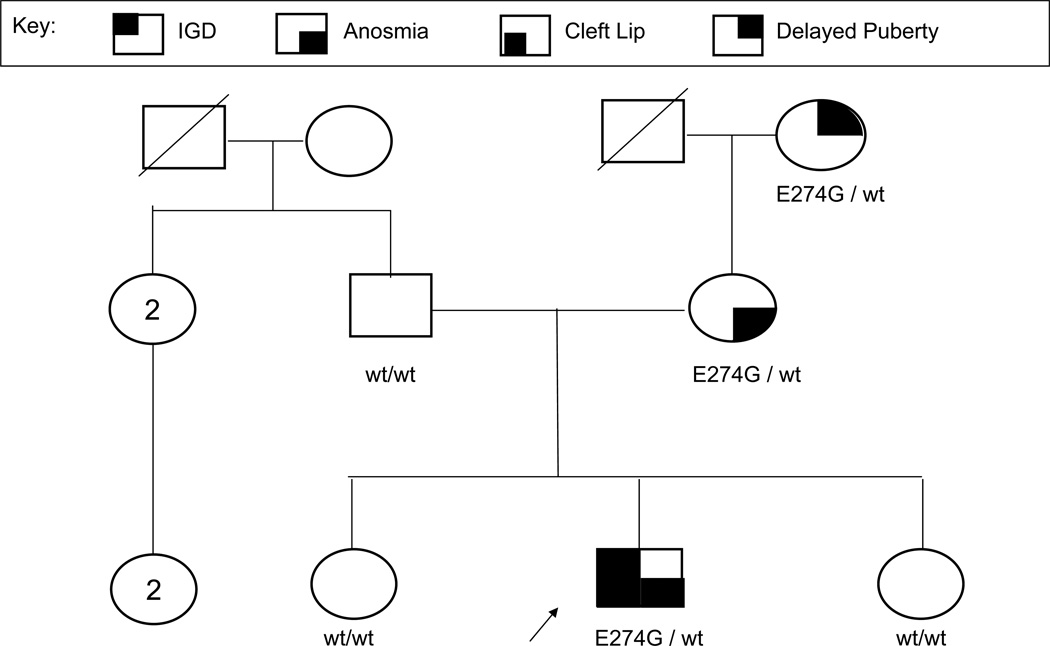Figure 4.
An IGD pedigree showcasing autosomal dominant inheritance with variable expressivity. As is typical for an autosomal dominant inheritance pattern, several generations have an “affected” family member. Affected individuals have one wild-type FGFR1 allele and one mutated FGFR1 allele. Additionally, the concept of variable expressivity is shown by the grandmother with delayed puberty, the mother with anosmia and normal puberty, and the proband (indicated by the arrow) with IGD, anosmia, and cleft lip, though all have the same genetic change.

